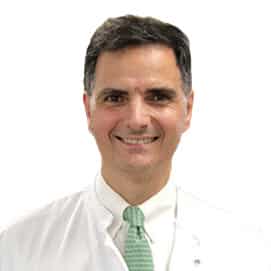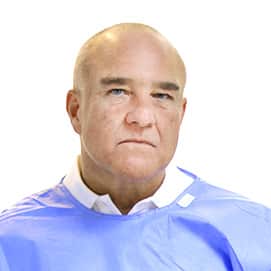Chemotherapy is carried out not only for common tumors, but also in the early stages (neoadjuvant and adjuvant), when there are appropriate indications. In this case, the smallest, so-called micrometastases in the lymph nodes or in other organs should be destroyed. Due to the fact that even with modern imaging techniques it is impossible to prove and also cannot exclude with certainty the presence of these micrometastases, “prophylactic” chemotherapy is recommended for patients with an appropriate combination of risk, because the risk of relapse and mortality can definitely be reduced by this. .
Only for patients with early stage cancer breast and indisputably with a low risk of recurrence, you can refrain from chemotherapy. This applies, first of all, to hormone-receptor positive, HER2-negative patients without lymph node involvement, for whom purely endocrine therapy is sufficient. Biomarker- and gentest can subsequently help to accurately identify these groups of patients.
All other patients with early-stage breast cancer, regardless of age, are recommended prophylactic chemotherapy:
- Patients with hormone receptor-positive, HER2-negative breast cancer and a high risk of recurrence (eg, lymph node involvement, high grade tumor, etc.) receive chemotherapy first and then antihormonal therapy.
- Patients with hormone receptor-negative, HER2-positive breast cancer receive chemotherapy in combination with anti-HER2 antibody therapy with trastuzumab. In this case, systemic treatment can also be carried out before the operation or be started (neoadjuvant).
- Patients with triple-negative breast cancer (hormone receptor-negative and HER2-negative) also receive chemotherapy, which can be done neoadjuvantly.
For particularly large or rapidly growing tumors that are initially unresectable, or for inflammatory (inflammatory) carcinomas, preoperative (neoadjuvant) chemotherapy is given, since in such cases, surgery alone is not enough to control the tumor in the breast tissue. Neoadjuvant chemotherapy is done to shrink the tumor to a size where breast-conserving surgery can be done instead of a mastectomy. But also in patients with triple-negative and HER2-positive breast cancer, neoadjuvant chemotherapy is becoming increasingly important. One of the advantages of neoadjuvant chemotherapy is that it can be quickly determined whether the selected chemotherapy regimen is working. Imaging diagnostic studies show how the tumor responds to treatment. If the tumor completely disappears due to therapy, then this is a particularly positive sign for the further course of the disease. Despite this, surgery should still be performed to confirm complete disappearance of the tumor.
It is important to remove and examine sentinel lymph nodes before starting neoadjuvant chemotherapy, as they cannot be reliably assessed after therapy.
Chemotherapy is also used in patients with advanced breast cancer:
- if there is an acute life-threatening situation or the disease progresses very quickly,
- if the patient has severe symptoms caused by metastases,
- if the tumor is hormone-negative,
- if antihormonal therapy for hormone-positive cancer no longer works.
Chemotherapy uses drugs that suppress the reproduction of tumor cells, and therefore are called cytostatics. First of all, we are talking about substances that prevent normal cell division. Their effect on cells is higher, the faster they multiply. As a rule, cancer cells divide rapidly and are sensitive to chemotherapy. But healthy cells, due to the action of cytostatics, experience difficulty in their division. Body tissues with rapid cell division, such as the mucosa of the gastrointestinal tract or hair root cells, suffer from cytostatics. Typical side effects of chemotherapy appear: nausea, vomiting, hair loss.
There are different groups of cytostatics that act at different phases of the cell cycle. In breast cancer, the following classes of active substances are used:
- Alkylantes, such as cyclophosphamide,
- Anthracyclines such as doxorubicin, epirubicin,
- Antimetabolites, eg fluorouracil/5-FU, capecitabine, methotrexate, gemcitabine,
- Platinum derivatives such as carboplatin, cisplatin,
- Suppressive mitosis
taxanes, e.g. paclitaxel, docetaxel, nab-paclitaxel,
vinca alkaloids, such as vinorelbine,
halichondrin B analogs, such as eribulin.
In early breast cancer neoadjuvant chemotherapy pays off the so-called polychemotherapy - a combination of various active substances and mechanisms of action. This increases the chances that a large number of cancer cells will be destroyed. Possible combinations of drugs are abbreviated names: FEC (5-fluorouracil + epirubicin + cyclophosphamide), DAC (docetaxel + doxorubicin + cyclophosphamide), EC-P (epirubicin + cyclophosphamide then paclitaxel). There are a large number of different combinations, and new combinations, dosages, temporary plans are constantly being researched, so that today each patient can receive a special chemotherapy that is suitable for her, individually selected taking into account the risk of relapse and possible comorbidities. If the tumor has the appropriate biological properties, then chemotherapy is combined with targeted therapy.
In advanced situations with rapid tumor growth or severe complaints, polychemotherapy is used as far as the general condition of the patient allows. More easily portable monochemotherapy with a single active substance is prescribed for slow tumor growth or if the patient is too weak.
In the case when cytostatics are prescribed in the form of infusions, venous access is necessary. Since repeated injections into the veins of the arm are perceived as very unpleasant, and in addition, cytostatics irritate the thin veins of the arms, it is possible to impose the so-called port systems. At the same time, access to the venous system is made in the subclavian region using a small “metal camera” located subcutaneously. A silicone tube is passed through the venous system directly to the large veins in front of the heart, where drugs can cause less damage due to the large volume of blood. The port system does not limit the patient's mobility. In addition, the integrity of the vein can also be broken, and the chemotherapy drug can get into the surrounding tissues and damage them. In the presence of a port system, this usually does not happen - thus, it is much more reliable.
Also available for the treatment of patients with metastasized breast cancer oral chemotherapy, i.e. pills. This has various advantages: not only does oral chemotherapy eliminate the patient's frequent clinic visits and possible discomfort during infusions, but the side effects of hair loss or nausea may be less pronounced.
Head of the Clinic of Oncology, Hematology and Palliative Medicine
Head of the Clinic for General, Visceral, Thoracic and Endocrine Surgery
Head of the Clinic for Radiation Therapy and Radiological Oncology
Video
Request appointment
Useful links
Photo gallery












